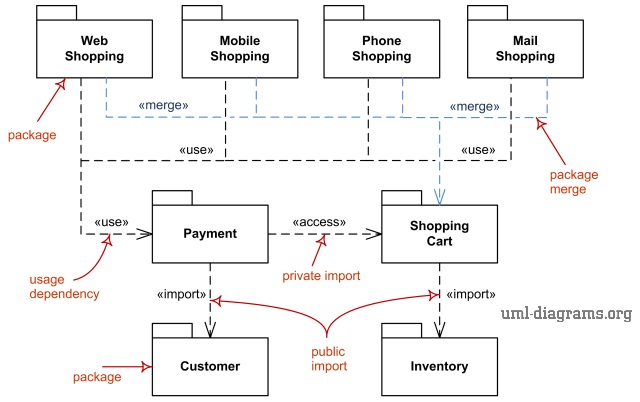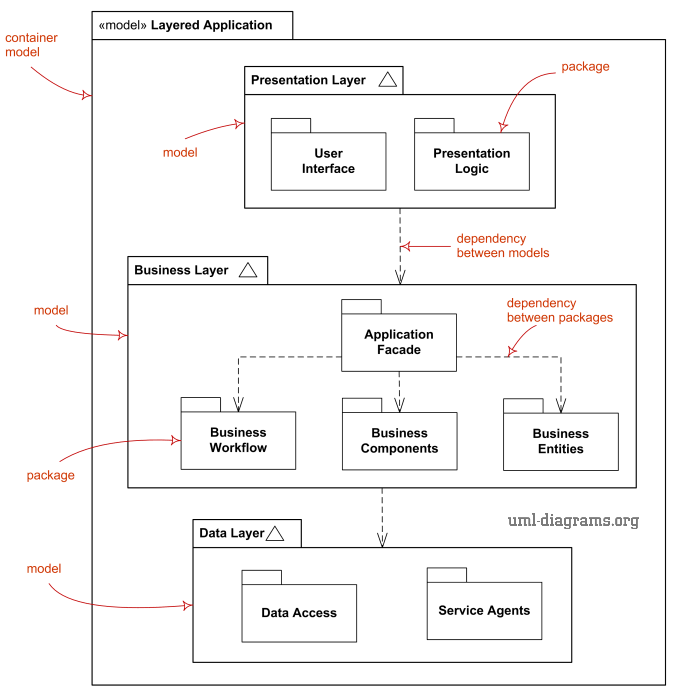UML Package Diagrams Overview
Package diagram is UML structure diagram which shows structure of the designed system at the level of packages. The following elements are typically drawn in a package diagram: package, packageable element, dependency, element import, package import, package merge.
Model diagram is UML auxiliary structure diagram which shows some abstraction or specific view of a system, to describe architectural, logical or behavioral aspects of the system. It could show, for example, architecture of a multi-layered (aka multi-tiered) application - multi-layered application model.
Package Diagram
Some major elements of the package diagram are shown on the drawing below. Web Shopping, Mobile Shopping, Phone Shopping, and Mail Shopping packages merge Shopping Cart package. The same 4 packages use Payment package. Both Payment and Shopping Cart packages import other packages.

UML package diagram elements - package, import, access, use, merge.
Model Diagram
Model diagram is UML auxiliary structure diagram which shows some abstraction or specific view of a system, to describe some architectural, logical or behavioral aspects of the system.
The drawing below shows some major elements of the model diagram. Layered Application is a "container" model which contains three other models - Presentation Layer, Business Layer, and Data Layer. There are dependencies defined between these contained models.

UML model diagram elements - model, package, dependency.
Models usually contain packages. Packages could have dependencies or other relationships, e.g. import, defined between them.
You can find some examples of package diagrams here: